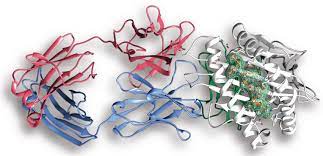Introduction
The key to unlocking the secrets of proteins and their roles in living beings lies in proteomics, a fast developing field of study. Proteomics offers important new understandings into a range of biological processes by examining the structure, function, and interactions of proteins. We will explore into the intriguing realm of proteomics in this blog, looking at its importance, methods, uses, difficulties, and potential future prospects.
Understanding Proteins
Definition and Structure of Proteins
- Proteins are substantial, intricate molecules made of amino acids. They are vital parts of all living things and are responsible for the structure, operation, and regulation of those things. Through a process known as protein synthesis, amino acids are joined together in accordance with the genetic code to create proteins.
- Primary, secondary, tertiary, and quaternary structures make up the hierarchy of protein structure. The linear arrangement of amino acids in a protein is referred to as its main structure. The secondary structure is created by the polypeptide chain folding into recognisable shapes like alpha helices and beta sheets. The three-dimensional organisation of the protein known as the tertiary structure is established by interactions between the side chains of the amino acids. A quaternary structure, which involves the connection of several polypeptide chains, may occasionally exist in proteins.
Functions and Roles of Proteins in Living Organisms
In living things, proteins are involved in a vast variety of processes. A few of the crucial functions of proteins include:
- Enzymes: In cells, proteins serve as catalysts to speed up biological processes. Because enzymes quicken chemical reactions, essential processes like protein synthesis, DNA replication, and metabolism can operate effectively.
- Structural Components: Cells and tissues are structurally supported by proteins. For instance, keratin, a protein, offers hair, nails, and skin strength and flexibility while collagen, another protein, creates the structural framework of connective tissues.
- Transporters: Molecules are transported through cell membranes with the help of proteins. As an illustration, membrane proteins known as transporters and channels assist in controlling the flow of ions, nutrients, and waste items into and out of cells.
- Receptors: On the surface of cells, proteins serve as receptors that enable cells to react to messages from their surroundings. Hormones, neurotransmitters, and growth factors are some examples of these signals. They attach to particular receptors and cause cellular reactions.
- Antibodies: Antibody-containing proteins are essential to the immune system. They identify and attach to foreign things like viruses or bacteria, designating them for eradication by other immune cells.
The Evolution of Proteomics
Over time, there have been major advancements made in the field of proteomics. To separate and examine proteins, scientists initially used methods like two-dimensional gel electrophoresis. However, the development of mass spectrometry transformed proteomics by making it possible to identify and measure proteins more precisely and sensitively. High-throughput proteomics, which permits the simultaneous study of thousands of proteins, was made possible by this ground-breaking method.
Techniques and Tools in Proteomics
A key method in proteomics is mass spectrometry. In order to identify and characterise proteins, it entails ionising the proteins and determining their mass-to-charge ratios. Proteins can be isolated depending on their size, charge, or affinity using techniques for protein separation such gel electrophoresis and chromatography. Additionally, bioinformatics is important for proteomics since it makes it easier to analyse data, identify proteins, and annotate proteins’ functions.
Applications of Proteomics
Proteomics offers a wide range of uses in several fields of science. Proteomics aids in the discovery of biomarkers for the early diagnosis, prognosis, and follow-up of diseases like cancer, cardiovascular problems, and neurological ailments. By identifying possible pharmacological targets and assessing drug effectiveness, proteomics also aids in the discovery and development of new medications. Proteomics also has uses in food science and agriculture, assisting with crop improvement, food safety, and quality assurance. Proteomics is also used in ecological and environmental research to comprehend how contaminants affect organisms and ecosystems.
Challenges and Future Directions
Proteomics still has a lot of potential, however there are several difficulties. Data processing and interpretation are significantly hampered by the complexity of proteomes, dynamic protein expression patterns, and the wide variety of protein modifications. Furthermore, it is necessary to address the ethical issues related to proteomics, such as privacy and responsible data use. However, recent technological developments, such single-cell proteomics and spatial proteomics, offer hope for resolving these issues. A more complete understanding of biological systems will be possible because to the integration of proteomics with other omics fields like genomics and metabolomics.
Ethical Considerations in Proteomics
Ethics become more important when proteomics generates enormous volumes of data. It is essential to protect privacy and make sure that data is used responsibly. Proteomics data must be handled carefully and in accordance with rigorous data protection guidelines. Additionally, encouraging responsible usage and minimising exploitation of proteomics data requires transparency in data sharing and collaboration. To ensure the long-term viability of proteomics, it is crucial to strike a balance between scientific advancement and moral issues.
Conclusion
A potent tool for deciphering the complicated world of proteins is now known as proteomics. Proteomics offers important insights into biological processes, disease mechanisms, and possible treatment targets by analysing proteins on a global scale. Proteomics is positioned to transform personalised health, agriculture, and environmental sciences thanks to ongoing technical breakthroughs and interdisciplinary collaborations. We are able to better grasp life itself as we delve deeper into the world of proteomics and uncover the mysteries of proteins.
